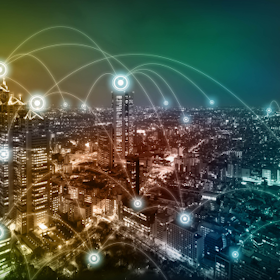Before we get into the meat of this review, a quibble. If you bought two iPhone 5 handsets last year, you would have said you have bought two iPhone 5s. This year, this same purchase results in a far more awkward tweet, something along the lines of having two iPhone 5ses. Apple, in future, will you please think about the tweeters.
Design
This part of the review should be fairly easy for us both. Firstly, close your eyes and relax. Clear your mind and tap into a calmer, more peaceful version of yourself. Now, I want you to picture an iPhone 5.

Got it? Great, you're now also picturing an iPhone 5s. The same chiseled aluminium chassis, the same glossy display, the same two-tone colour palette across the back of the device. This year, you have a third colour option to choice from: a champagne-coloured handset which many are calling 'Gold'. Aside from this change, the iPhone 5s is almost identical to its predecessor.
One of the key areas of departure is the size of the Home button and the stainless steel ring running around it. There is also a larger hole for a dual-LED camera flash on the back of the phone, but this change is even less noticeable. Yes, you are going to have devise a way of proving to strangers on the train that this is in fact the newer model.

The 'Retina' branded LCD screen is the same 4-inch panel found in last year's iPhone 5, with the same 1136 x 640 pixel resolution. This is quite a step down from the 1080p screens in phones from Samsung, Sony and HTC this year, but given that Apple keeps the screen so small, it still looks sharp and is exceptionally bright and colourful.
As it has been with all Apple iOS products since the beginning, the iPhone 5s doesn't have a microSD expandable memory card slot and it doesn't use a micro-USB connection like the bulk of all of smartphones in market. Apple chooses its own proprietary USB connection calling 'Lightning' which has a couple of technical advantages, but also has the convenience of being able to insert in whether it is facing up or down.
Fingers and toes
One of the stand-out new features of Apple's new phone is something that many people properly don't realise that they want. Built into the Home button on the iPhone 5s is a fingerprint scanner that can be used to unlock the phone and authenticate purchases through iTunes and the App Store.

This might sound like techno overkill, but it is one of the few new features that has really impressed us in this early stage of testing. It works surprisingly well; it is both fast and accurate, and most importantly, it is far easier to use that tapping out PINs to unlock or passwords to purchase.
Apple says it will not open up the scanner's functionality to third-party developers, but we think this is just a short-term precaution to make sure that no one finds a security flaw in the technology at launch. Once it passes these tests, expect to see many more apps taking advantage of this cool new feature.
iOS 7

As we said in our review of the iPad Mini, the real reason to buy an iPhone (or not to) is for access to the iOS ecosystem, though this argument holds less weight with the iPhone than it does with the iPads. iPad apps are rich and powerful, and designed for the larger screens. The iPhone's 4-inch panel limits how much can be achieved with apps, and though many of the same apps cross over between the devices, the iPad is definitely the must-have device.

There is plenty of new, exciting features in iOS 7 that don't involve third-party developers, though. Apple does a great job of giving iOS a fresh coat of paint, with some attractive new icon designs and a leaning towards bright, pastels and neons.
Features-wise, there are several important enhancements to speak about. Control Center is a big leap forward in on-the-go usability for the iPhone, giving users quick access (by swiping up from the bottom of the screen) to important control toggles, like Wi-Fi, Bluetooth, Airplane mode, plus volume and screen brightness sliders. Many will recognise the same functionality from recent Android phones, but whether you think it matters who thought of it first, it is great to have it now on the iPhone.

Airdrop is also worth pointing out. If you want to share files, like photos, with iOS friends on the same network, you will be able to by using Airdrop. You just select the files you want to send, and iOS takes care of all the tricky networking.
Painfully, Airdrop on iOS only works with other iOS devices, and not with Airdrop in Mac. This seems like a major oversight to us, as sharing files wirelessly with a laptop seems like an excellent use of this tool.

A significant change you are likely to be seeing a great deal of is found in the redesigned Safari web browser. Everything here looks brand new, from the intuitive new way the address bar recedes from view when it's not required, to iCloud tab syncing.
iOS downsides
Despite there being some great new improvements, some old niggles remain the same. The keyboard, for instance, is in dire need of a makeover, not for its looks, but for how you use it.
If you've been using an iPhone for the past few years, you might be unaware of the improvements made to virtual keyboards outside of the iOS bubble. Swype is one great example, where instead of tapping on each letter individually, you draw a single, continuous line across all the letters you wish to use.

This concept has evolved further, so that now if you use the keyboard on a Sony phone, you swipe across the letters until it predicts which word you are trying to type. You might only need 3 or 4 letters from a much longer word for the prediction to fill in the rest.
If gestures like swiping work so well for keyboards, why don't we see them more across the entirety of iOS? Despite not selling well, BlackBerry's new operating system uses some really ingenious gesture commands to interact with the UI. So much, that there is no buttons on BlackBerry phones used for navigation.
With iOS 7, Apple does include a few new gestures into its navigation. Swiping up from the bottom of the screen launches Control Center, swiping down from the top shows notifications, while swiping down mid-screen brings up the Spotlight search bar. But, we still this is concept could be taken much further.
Camera
As we've come to expect from previous releases, the camera on the iPhone 5s is superb; one of the best available in a smartphone.
Because we are already well aware of how impressive the camera is in good lighting conditions, we decided to stress test it under less-than perfect lighting conditions. It handled them very well. Colour reproduction is very good, and the way it deals with the extremes in lighting is admirable.




Power and performance
Apple's biggest leap forward this year is definitely its hardest to sell. The step up in processing potential of the new hardware in the iPhone 5s isn't done justice but the step up in naming from A6 to A7. This isn't a single step towards the future, it's more of a triple jump.
Switching from 32-bit architecture to a 64-bit chip is a future proofing measure by Apple that it won't see a return on straight away. What is interesting is that Apple refuses to enter into the numbers game when it comes to hardware. It won't divulge how many cores are running on the A7 processor or what the clock speed is for these cores. This is a wise move, as there is generally a lot of misinformation around how these components work, and what the advantages of more cores and higher clock speeds are, if there are any.

What you need to know is that this is a supremely fast device. There is no lag in the system, no glitches or faults that we could see. Apple has again done a marvellous job of keeping the computing invisible in the iPhone 5s -- just the way it should be.
Battery-wise, we are seeing about the same battery life as we did last year with the iPhone 5. The phone can play videos for about 9-hours, and easily lasts a business day between charges. There's no real improvement here, which is a shame, but at least it should suffice for most users.
Overall
Apple's iPhone 5s will probably be the most difficult iPhone for Apple to sell so far, mostly because its best features are hidden. The fingerprint scanner is a great idea, and one we expect to see in most Android phones next year, but it's not the sort of tech that arouses enthusiasm. The A7 processor is great too, but kept out of sight from the everyday consumer. In a world where bigger numbers rule the billboards, Apple will have a tough time getting its message across.
It's also true to say that while Apple has been focusing on some big picture changes, it has refused to update the parts of phones that people think are important. There is a reason why Samsung sells so many Galaxy Note handsets, for example, or why Nokia's new 41-megapixel camera in the Lumia 1020 has piqued the curiosity of many.

Apple is sticking to its guns around screen size and the importance of its ecosystem, but it's doing so in the face of increasingly stiff competition. A couple of years ago, this looked like strength and a belief in a specific approach. Now, it reads like stubbornness.
This isn't to say the iPhone 5s isn't a good smartphone, it is. It is an iPhone as we've come to know them: it's fast, slick, easy-to-use and backed up by more apps in the ecosystem than you could ever contemplate using in this lifetime. Buy it safe in the knowledge that you know what you are getting, not in the hope that you are buying something new and unexpected.
The major consideration for us is price. The iPhone 5s is good, but does it deserve to be the most expensive device in the phone shop? Choosing any high-end Android device could save you between $10 to $20 per month, and while there are many difference to consider, it does make the decision harder this year than it may have been in the past.
Find Better Phones and Plans
Hundreds of cell phone plans unpacked. All the facts. No surprises.



































